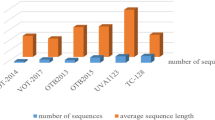Abstract
At present, low-rank and sparse decomposition model has been widely used in the field of computer vision because of its excellent performance. However, the model still faces many challenges, such as being easily disturbed by dynamic background, failing to use prior information and heavy computational burden. To solve these problems, this paper proposes a novel low-rank and sparse decomposition model based on prior information, group sparsity, and nonconvex total variation. First, the rank of background matrix is fixed to 1, so singular value decomposition is no longer needed, which greatly reduces the computational burden. Secondly, the foreground target is divided into dynamic background and real foreground to reduce the interference of dynamic background. Finally, l2,1-norm and nonconvex total variation is introduced into model to incorporate prior information of dynamic background and real foreground. The experimental results show that compared with several classical models, our model can extract the foreground target from the dynamic background more accurately, more completely and more quickly.




Similar content being viewed by others
REFERENCES
Tissainayagam, P. and Suter, D., Object tracking in image sequences using point features, Pattern Recognit., 2005, vol. 38, no. 1, pp. 105–113.
Gao, P.H., Zhao, W.F., and Shen, J.Z., Detection of crowd state mutation based on background difference algorithm and optical flow algorithm, J. Zhejiang Univ., 2018, vol. 52, no. 4, pp. 649–655.
Zivkovic, Z., Improved adaptive Gaussian mixture model for background subtraction, Proceedings of the 17th International Conference on Pattern Recognition, Cambridge, 2004, vol. 2, pp. 28–31.
Barnich, O. and Van Droogenbroeck, M., ViBea universal background subtraction algorithm for video sequences, IEEE Trans. Image Process., 2011, vol. 20, no. 6, pp. 1709–1724.
Zhang, Q., Lu, W., Huang, C., et al., An adaptive vibe algorithm based on dispersion coefficient and spatial consistency factor, Autom. Control Comput. Sci., 2020, vol. 54, no. 1, pp. 80–88.
Gao, Z., Cheong, L.F., and Wang, Y.X., Block-sparse RPCA for salient motion detection, IEEE Trans. Pattern Anal. Mach. Intell., 2014, vol. 36, no. 10, pp. 1975–1987.
Zhou, W., Sun, Y.B., Liu, Q.S., et al., L0 group sparse RPCA model and algorithm for moving object detection, Acta Electron. Sin., 2016, vol. 44, no. 3, pp. 627–632.
Lang, H., Ding, S., Lu, J., and Ma, X., Traffic video significance foreground target extraction in complex scenes, J. Image Graphics, 2019, vol. 24, no. 1, pp. 50–63.
Candès, E.J., Li, X., Ma, Y., et al., Robust principal component analysis?, J. ACM, 2009, vol. 58, no. 3, pp. 1–37.
Ren, C.X., Dai, D.Q., and Yan, H., Robust classification using l 21-norm based regression model, Pattern Recognit., 2012, vol. 45, no. 7, pp. 2708–2718.
Liu, Y., Du, H., Wang, Z., et al., Convex MR brain image reconstruction via non-convex total variation minimization, Int. J. Imaging Syst. Technol., 2018, vol. 28, no. 4, pp. 246–253.
Cao, X., Yang, L., and Guo, X., Total variation regularized RPCA for irregularly moving object detection under dynamic background, IEEE Trans. Cybern., 2016, vol. 46, no. 4, pp. 1014–1027.
Lin, Z., Liu, R., and Su, Z., Linearized alternating direction method with adaptive penalty for low-rank representation, Electronic Proceedings of the Neural Information Processing Systems Conferences, Granada, 2011, pp. 612–620.
Yang, Z. and Han, D., Alternating direction method of multipliers for sparse and low-rank decomposition based on non-convex non-smooth weighted nuclear norm, IEEE Access, 2018, vol. 6, no. 1, pp. 56945–56953.
Goyette, N., Jodoin, P., Porikli, F., Konrad, J., and Ishwar, P., Changedetection.net: A new change detection benchmark dataset, Proceedings of 2012 IEEE Computer Society Conference on Computer Vision and Pattern Recognition Workshops, Providence, 2012, pp. 1–8.
Li, L., Huang, W., Gu, Y.H., et al., Statistical modeling of complex backgrounds for foreground object detection, IEEE Trans. Image Process., 2004, vol. 13, no. 11, pp. 1459–1472.
Funding
This paper is supported by the Doctor Foundation of the Yulin Normal University, project no. G2018015.
Author information
Authors and Affiliations
Corresponding authors
Ethics declarations
We declare that we do not have any commercial or associative interest that represents a conflict of interest in connection with the work submitted.
About this article
Cite this article
Qinli Zhang, Lu, W. & Yang, X. A Novel Low-Rank and Sparse Decomposition Model and Its Application in Moving Objects Detection. Aut. Control Comp. Sci. 55, 388–395 (2021). https://doi.org/10.3103/S0146411621040064
Received:
Revised:
Accepted:
Published:
Issue Date:
DOI: https://doi.org/10.3103/S0146411621040064




